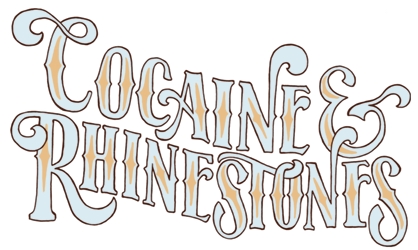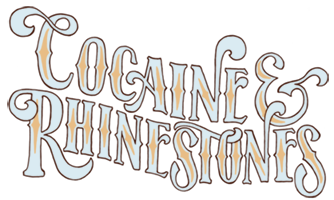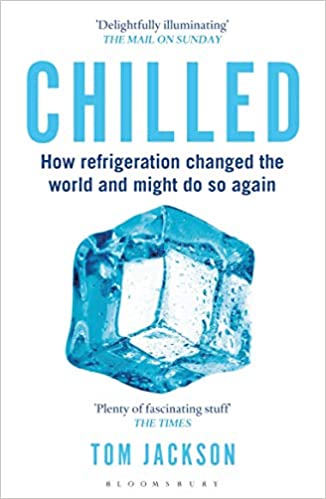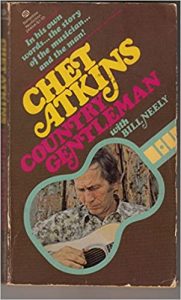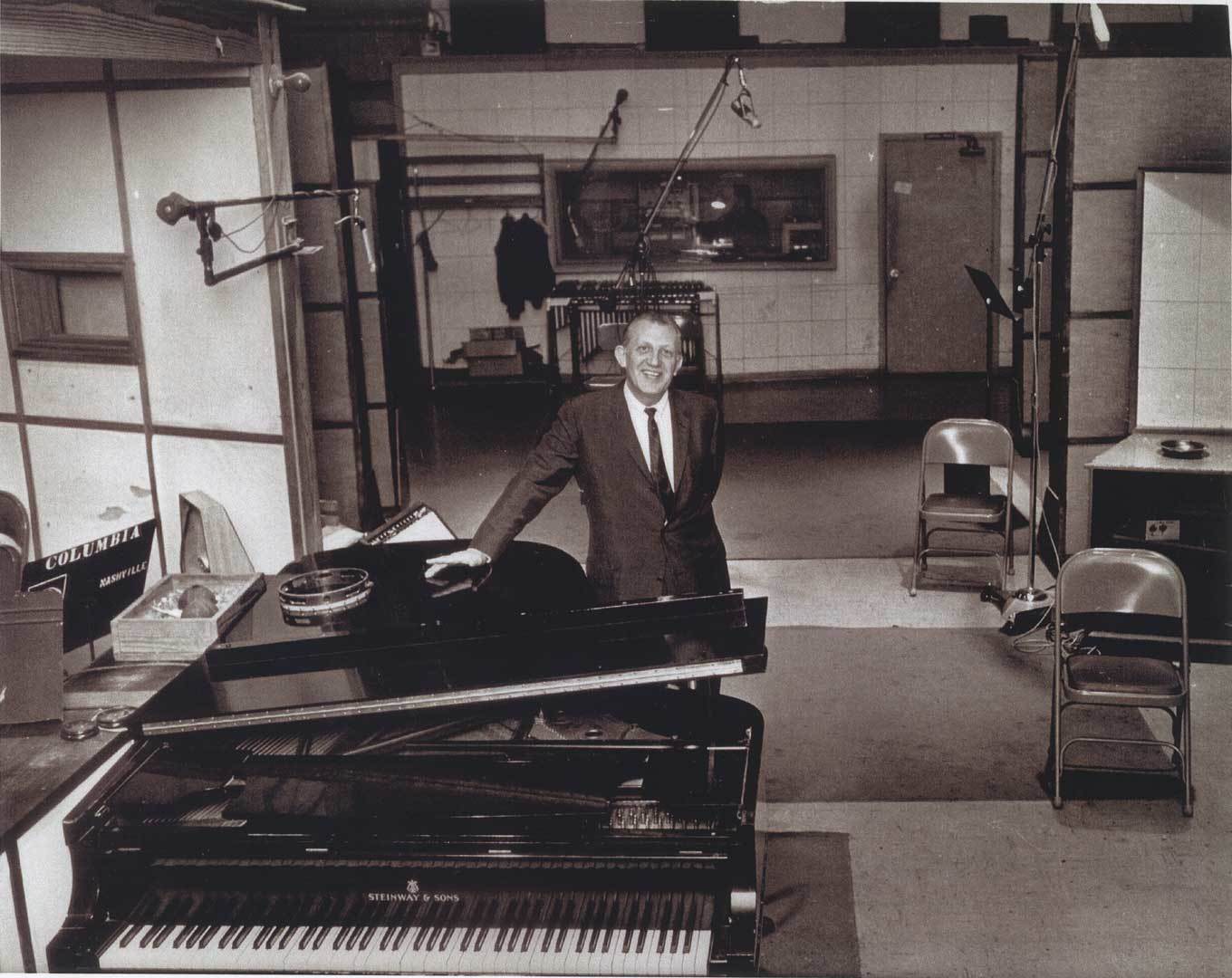
What if the first serious books about country music contained a few massive errors which were then repeated by nearly everyone who’s since used those books as a source? How long do you think it would take for society to build a fundamentally flawed history of an entire genre on top of such a foundation? Fifty years? Well, that’s exactly what happened.
Owen Bradley’s name means nothing to many country music fans. Some recognize it from the album credits of a few of their favorite country artists. Others manage to cast him as an enemy of country music. But anyone who hears the name Owen Bradley and thinks anything less than “he’s the single most important producer in the history of Nashville, who made some of the greatest and most influential records of all time in any genre” simply has not been given enough information about the man or the music. That changes today.
Contents (Click/Tap to Scroll)
- Primary Sources – books, documentaries, etc.
- Transcript of Episode – for the readers
- Liner Notes – list of featured music, online sources, further commentary
Primary Sources
In addition to The Main Library and the Season 2 Library, these books were used for this episode:
Transcript of Episode
As part of my agreement with Simon & Schuster to publish a book adaptation of Season 2, the transcripts that have been freely available for over a year will be temporarily removed from this website. Please consider ordering a copy of Cocaine & Rhinestones: A History of George Jones and Tammy Wynette through your favorite local bookstore or requesting that your local library order a copy you can check out.
Liner Notes
Excerpted Music
This episode featured excerpts from the following songs, in this order [with links to purchase or stream where available]:
- Little Richard – “Tutti Frutti” [Amazon / Apple Music]
- Slim & Slam – “Tutti Frutti” [Amazon / Apple Music]
- Roy Acuff – “Wabash Cannonball” [Amazon / Apple Music]
- Tommy Dorsey’s Orchestra w/ Frank Sinatra – “I’ll Never Smile Again” [Amazon / Apple Music]
- Roy Acuff – “Night Train to Memphis” [Amazon / Apple Music]
- Brad Brady & His Tennesseans – “Zeb’s Mountain Boogie” [Amazon / Apple Music]
- Elton Britt – “Wave to Me My Lady” [Amazon / Apple Music]
- Hank Williams – “Never Again (Will I Knock on Your Door)” [Amazon / Apple Music]
- Francis Craig – “Near You” [Amazon / Apple Music]
- Ernest Tubb & Red Foley – “Love Bug Itch” [Amazon / Apple Music]
- Ferlin Husky – “Gone” [Amazon / Apple Music]
- Jim Reeves – “Four Walls” [Amazon / Apple Music]
- Jimmy C. Newman – “A Fallen Star” [Amazon / Apple Music]
- Sonny James – “Young Love” [Amazon / Apple Music]
- Webb Pierce – “Slowly” [Amazon / Apple Music]
- Mel Tillis – “Jukebox Man” [Amazon / Apple Music]
- Sons of the Pioneers – “Cool Water” [Amazon / Apple Music]
- Vaughn Monroe Orchestra w/ Sons of the Pioneers – “Cool Water” [Amazon / Apple Music]
- Vaughn Monroe – “Riders in the Sky” [Amazon / Apple Music]
- Gene Autry – “Riders in the Sky” [Amazon / Apple Music]
- Dick Thomas – “I’ve Got Spurs (Jingle Jangle Jingle)” [Amazon / Apple Music]
- Kay Kyser & His Orchestra – “(I’ve Got Spurs That) Jingle Jangle Jingle” [Amazon / Apple Music]
- Roy Rogers – “Don’t Fence Me In” [Amazon / Apple Music]
- Bing Crosby & The Andrews Sisters – “Don’t Fence Me In” [Amazon / Apple Music]
- Gene Autry – “Don’t Fence Me In” [Amazon / Apple Music]
- Ennio Morricone – The Big Gundown, seconda caccia [Amazon / Apple Music]
- Gene Autry – “Tumbling Tumbleweeds” [Amazon / Apple Music]
- Sons of the Pioneers – “Tumbling Tumbleweeds” [Amazon / Apple Music]
- The Ink Spots – “If I Didn’t Care” [Amazon / Apple Music]
- Marty Robbins – “Singing the Blues” [Amazon / Apple Music]
- Guy Mitchell – “Singing the Blues” [Amazon / Apple Music]
- Marty Robbins – “A White Sport Coat (And a Pink Carnation)” [Amazon / Apple Music]
- Bobby Helms – “Jingle Bell Rock” [Amazon / Apple Music]
- Bobby Helms – “My Special Angel” [Amazon / Apple Music]
- Bobby Helms – “Just a Little Lonesome” [Amazon / Apple Music]
- Ernest Tubb & Red Foley – “Kentucky Waltz” [Amazon / Apple Music]
- Ernest Tubb & Red Foley – “The Strange Little Girl” [Amazon / Apple Music]
- Patsy Cline – “Walkin’ After Midnight” [Amazon / Apple Music]
- Patsy Cline – “I Fall to Pieces” [Amazon / Apple Music]
- The Rembrandts – “I’ll Be There for You” [Amazon / Apple Music]
- Patsy Cline – “She’s Got You” [Amazon / Apple Music]
- Patsy Cline – “Crazy” [Amazon / Apple Music]
- Hank Garland – “Sugarfoot Rag” [Amazon / Apple Music]
- Red Foley – “Sugarfoot Rag” [Amazon / Apple Music]
- Red Foley – “Chattanoogie Shoeshine Boy” [Amazon / Apple Music]
- Grady Martin & The Slewfoot Five – “Slewfoot Rag” [Amazon / Apple Music]
- Elvis Presley – “Little Sister” [Amazon / Apple Music]
- Roy Orbison – “Running Scared” [Amazon / Apple Music]
- Brenda Lee – “Heart in Hand” [Amazon / Apple Music]
- Skeeter Davis – “The End of the World” [Amazon / Apple Music]
- Brenda Lee – “I’m Sorry” [Amazon / Apple Music]
- Brenda Lee – “The End of the World” [Amazon / Apple Music]
- Skeeter Davis – “I’m Saving My Love” [Amazon / Apple Music]
- Eddy Arnold – “Kentucky Waltz” [Amazon / Apple Music]
- Bill Monroe – “Kentucky Waltz” (re-recording) [Amazon / Apple Music]
- Bill Monroe – “Prisoner’s Song” (re-recording) [Amazon / Apple Music]
- Bill Monroe – “Dark as the Night, Blue as the Day” [Amazon / Apple Music]
- Jeannie Seely – “Don’t Touch Me” [Amazon / Apple Music]
- Wilma Burgess – “Don’t Touch Me” [Amazon / Apple Music]
- Wilma Burgess – “Misty Blue” [Amazon / Apple Music]
- Eddy Arnold – “Misty Blue” [Amazon / Apple Music]
- Conway Twitty – “Together Forever” [Amazon / Apple Music]
- Conway Twitty – “I See the Want to in Your Eyes” [Amazon / Apple Music]
Excerpted Video
These videos were excerpted in the episode. For any number of reasons, YouTube may remove them in the future but here they are for now:
Commentary and Remaining Sources
I know this entire podcast and especially episodes like this really sound as though you’re just listening to me go off on my own ideas about the history of country music, so I’m going to remind everyone of something I said in Season 1: receiving all this information through the medium of my words does not mean you’re reading my personal opinions unless I directly state that is the case. Even when I do state something is my opinion, like the practical definition of Nashville Sound given in this episode, that opinion is nearly always based on having deeply researched the perspectives of the people responsible for creating whatever I’m talking about. My “opinion” is not something I have fabricated out of thin air. It’s me agreeing with people who I believe were in the best position to speak with authority on any given topic, which belief is a product of the years I spent researching the topic in order to present you with the perspective of the people who were actually there when all of this happened. In this case, that’s the artists and producers and studio musicians working in Nashville at the time, often the originators of these concepts and even the terms themselves, which then become distorted through popular misunderstanding and misuse by people who really have no idea what they’re talking about and no authority to speak on the matter. So, yes, you’re receiving these perspectives as I’ve chosen to communicate them but I am 100% always trying to represent the thoughts and beliefs of important historical figures, not whatever random ideas I would like to be true.
I do know low-sodium products are not inherently safer for everyone to consume but that’s the way they’re often packaged and thought of, which is the mentality my analogy was borrowing.
A few more random things:
The train whistle sound in “Wabash Cannonball” really does come from Roy Acuff’s throat. It’s not any kind of trick or fakery. Train whistle imitations kind of used to be a thing. I’ve seen people do it in person but I have no idea how it’s done.
On the topic of Owen Bradley caring about his artists’ identities shining through the work, I should mention I’m aware of the story about Buddy Holly’s disastrous sessions for Decca in Nashville and that Jerry Allison of The Crickets tells the story like Owen Bradley really didn’t give a shit about anything other than being late to go water skiing… But that part of the story has never really made any sense to me because there isn’t a single other story like this about Owen Bradley. There’s not one other story of him trying to rush through a recording session to go be somewhere else. The reality is he could go water skiing whenever he wanted. There’s also the matter of this quote attributed to Jerry Allison: “Back on those dates I don’t even remember which guy was Paul Cohen and which guy was Owen Bradley or who the engineers were. It was like, they were the biggies and we were just dips. We didn’t groove with them or anything.” Since we have the source for this story point-blank on record as not really knowing who the hell they’re talking about, I think it’s entirely plausible Paul Cohen was actually the person in the studio who wanted to get out of there to go water-skiing, especially when you consider he could not go water-skiing in a Nashville area lake whenever he wanted because he flew down from New York for the session. And there’s the tape recording of Paul Cohen being a complete bastard to Buddy Holly about not letting Buddy out of his recording contract. This whole story is almost always told from a rockist perspective which positions Nashville studio players and producers as not really knowing anything about rock and roll. If this and the next episode aren’t enough to prove that’s one of the most ignorant takes imaginable, definitely go listen to the first Johnny Burnette & The Rock and Roll Trio album because that’s definitely Grady Martin playing guitar and probably Bob Moore on bass.
A little connection between this episode and the previous one, the band backing up Burl Ives on his version of “Diesel Smoke, Dangerous Curves” was Grady Martin and the Slewfoot Five.
As for my sources, other than the main reference books from The Library, I don’t have many…
I gave Michael Kosser’s How Nashville Became Music City USA a shoutout because that’s where I got the Norbert Putnam story and it’s probably the best single book from the Library for anyone particularly interested in this episode and the next.
The main book used for the Ernest Tubb episode in Season 1 was a source again here. That’s Air Castle of the South, Craig Havighurst’s great history of WSM. What I said in this episode about WSM not being a country station for most of its 20th century existence is why that book isn’t on the Library page but it will continue to be a source anytime WSM plays a big part in a story.
There’s the already mentioned 1964 issue of Music Business magazine and the 1976 Rolling Stone interview with Chet Atkins.
Other than that, a lot of this episode was just me talking about records from the perspectives of all the people involved in making them, which is informed by the books on the Library page and my time spent in the Country Music Hall of Fame and Museum archives. (Actually, that’s maybe an important thing to point out: how often the records themselves are the main source for episodes the show. If you know what you’re looking at and take the time to track down all the threads, there’s a lot of story hiding in the artists who recorded certain songs and when and to what degree of success, which all ties into larger career moves and industry trends and so on.)
As for all the ice stuff at the beginning, I did read a book called Chilled: How Refrigeration Changed the World and Might Do So Again by Tom Jackson. But the bulk of that book is really about the technology itself and the science of refrigeration and ice manufacturing, which I didn’t really even get into. A lot of what I put together in the intro around ice cream came from more general research on the dates of inventions and Howard Johnson and all the things I talked about. The narrative in this intro was constructing more from that raw data.
Okay, I’ll be back in a couple weeks with more on the Nashville A-Team, the Nashville Sound, and how Music Row ties into the larger histories of pop, rock and country music.
